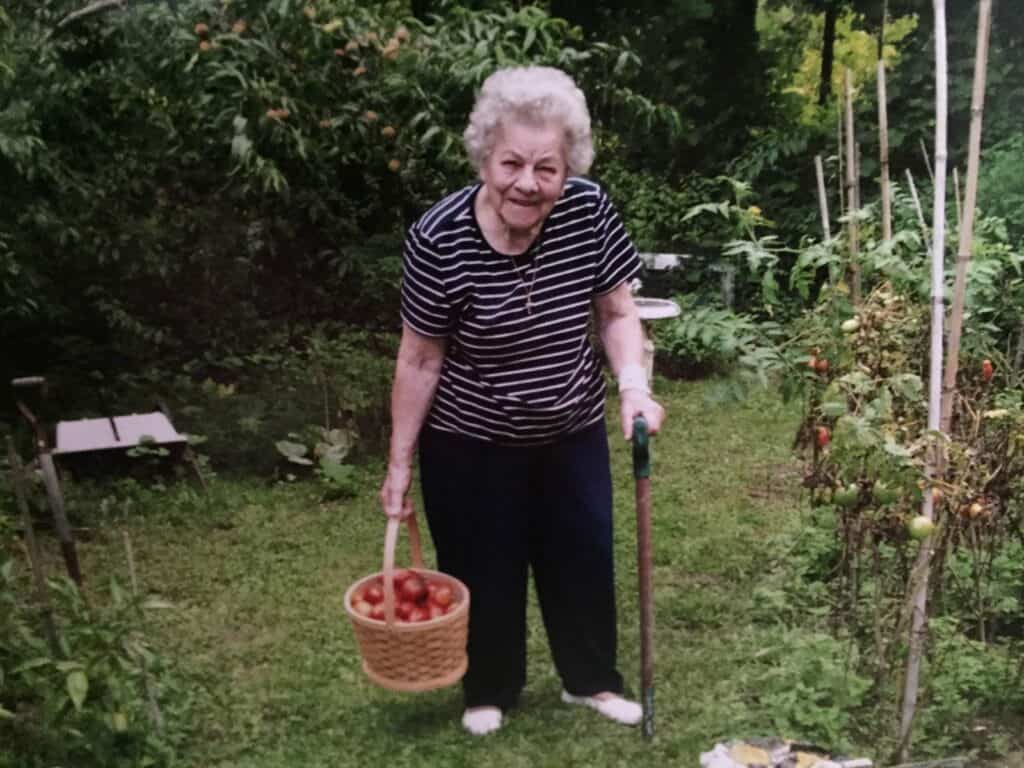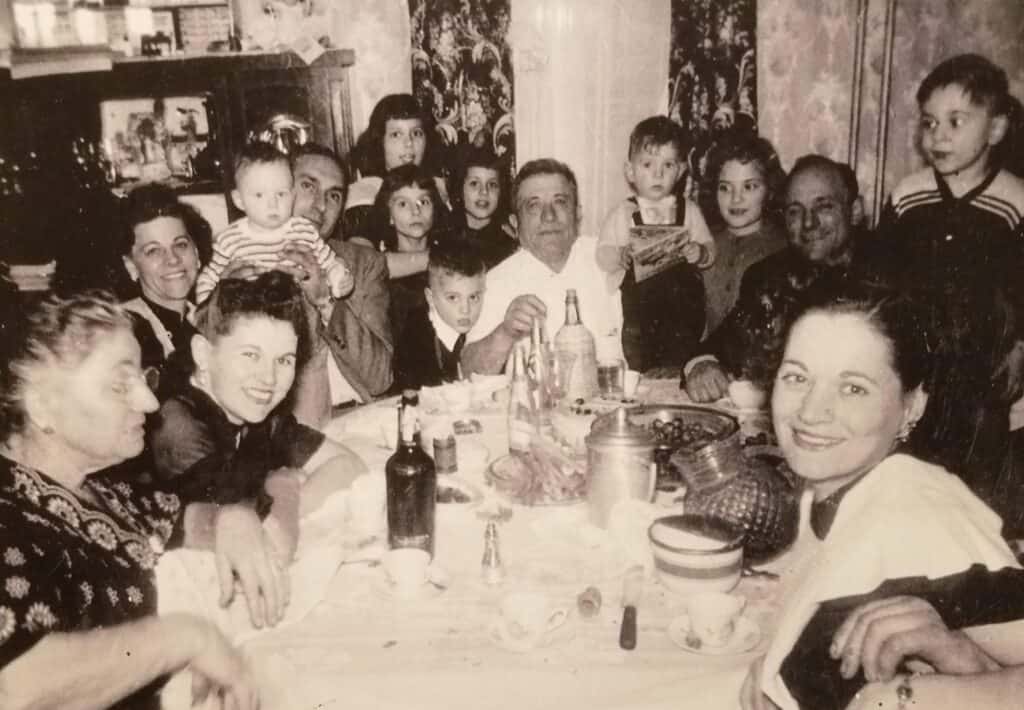

We always had sausage for lunch on Saturdays, because we were always making the sauce for Sunday macaroni. Every Saturday started the same way. First my mother, my sister and I cleaned the house, then we started the sauce. Two pounds of sausage, one hot, one sweet, two pounds of ground meat for the meatballs. Only sometimes braciola. My mother’s Tolvese grandmother put in chicken too. But we never did. We made it Aviglanese style because that’s what the wife does. She learns the sauce of her husband’s people so he’ll always have the sauce from his childhood. My mother studied the Aviglanese recipes from my father’s grandmother, Mammanonna. It was a point of pride that women were great cooks and that they learned their husbands’ family recipes perfectly, too. When my mother was first married, she made only one pound of meatballs and one pound of sausage. But when my father came home from his half day of work—he always put in an extra half day to get ahead of the work week—he’d smell the sausage browning in the pan, and he’d fork out a couple of pieces, one or two meatballs. When my mother asked him what he was doing, he said, “I can’t even eat in my own house?”
“One time he ate all my meatballs and half of the sausage, I had nothing left to make the sauce with, so after that I figured ‘Hey it’s his money, I’d better get enough for him and for the sauce.’”
To me the sausage in the sauce is just for flavor. By the time it’s soaked with the tomato sauce, I don’t really like the way it tastes, but the sausages that come hot out of the frying pan, after they’ve turned dark golden brown, with Spinelli’s fresh, crusty loaf of Italian bread, a salad, made in the summer with arugula and tomatoes from one of my aunt’s or uncle’s gardens… Now that’s a feast.
After we cleaned up from lunch and my father went to lie down for a nap, my sister and I cleaned up the kitchen, arguing over who was going to wash the dishes, who was going to clear the table, who was going to sweep the floor. All part of the same routines we practiced day in and day out, week in and week out, year in and year out.

Here is how to make your own sausage
Ricetta per salsiccia
First go to Aunt Toni’s in Waterbury, whose son, Nick Padula, knows more about meat than almost anyone on earth, including where the most humane slaughter house is in Pennsylvania.
But if you can’t do that then you follow this recipe.
You must buy pork butt with the bone in, referred to by those who know, as bone-in pork butt. You ask for the following things:
- you want the bone in the pork butt
- you want to take the bone home for the sauce
- you want the butcher to change the plate on the grinder to 3/8th of an inch
- you want it to be ground once and only once
You keep the meat cold until just before you start the process of making sausage—to avoid any possibility of bacteria setting in.
Before you do anything else, once you get the meat home, you must wash your hands thoroughly, again, to avoid any bacteria.
You take off all jewelry and put it to one side.
You buy the intestines. They are called hog casings, mind you, not pig casings. You should be able to buy them at any good grocers. You soak the intestines in luke-warm water to get the salt out.
We used 12 lbs of pork. Never freeze it. It will ruin the flavor.
Wash the table thoroughly before placing the meat on the table. Aunt Toni had a plastic tablecloth on the table, which was perfect.
Ingredients
- 12 lbs of ground pork
- One Aunt Toni handful of kosher salt = 4 tbsps.
- One Aunt Toni handful of hot pepper = 4 tbsps.
- Four Aunt Toni handfuls of fennel seed = 16 tbsps. If you can possibly get fennochioieri (wild fennel seed) from your relatives in Italy, so much the better. If not, regular fennel seed will do.
Preparation
- Knead this mixture all together.
- If the meat feels dry to the touch, add liquid of choice, white or red wine or water. It makes it easier to stuff into the casings.
- But before you start stuffing, you put some oil in the frying pan and cook some of the stuffing out of the casings and stir so that you can taste the flavoring and see if you think it’s right. Adjust according to your response. And of course so that you can have lunch. You don’t overcook it or it will change the flavor. You watch Aunt Toni to learn the rules.
- Drink very good wine with lunch which Nick has procured from one of his customers, a restaurant owner in Connecticut whose meatballs are as good as my grandmother’s and Billy’s.
- When the casings are washed clean of their salt they are ready to use, you use a wide-mouth funnel. Not that hard to buy.
- If you’ve had lunch in between preparing the sausage meat and stuffing it, wash your hands again.
- You pull the casings up over the stem of the funnel so that they are pulled up over the stem and not dangling off the end. That would make it much harder to work with. You keep that casing in place on the stem as you work or the whole thing gets very awkward.
- Push the sausage mixture into the funnel mouth, using your thumbs to push it down through. You pierce the casings with a pointed object, so that no air pockets are left in the stuffing. You stuff and pierce and stuff again so that the casings are solidly filled. Once a piece of the stuffing has filled about four inches twist the casing good and tight to make a link. Continue stuffing. You can tie the links off after the whole casing is finished, of course including the end so that nothing comes out and between the links too.
- Send each person home with a Ziplock of sausage.